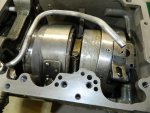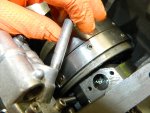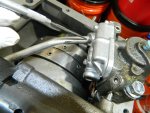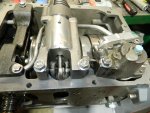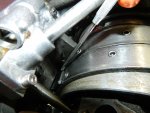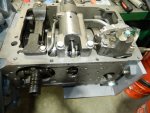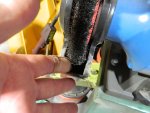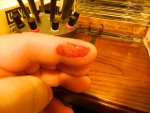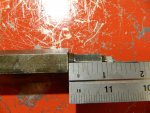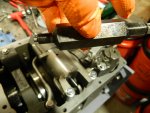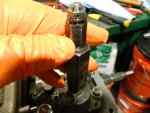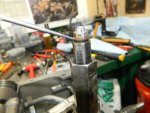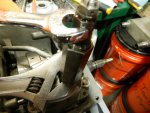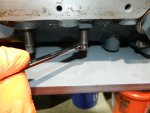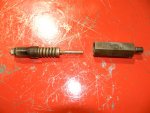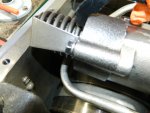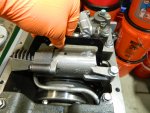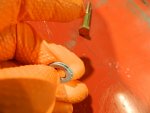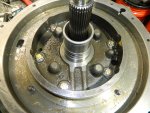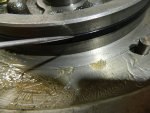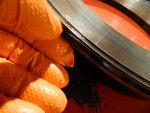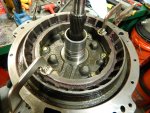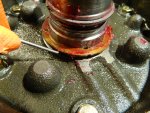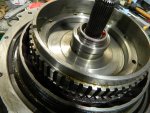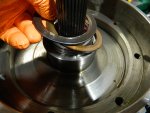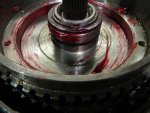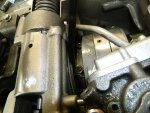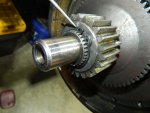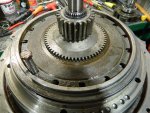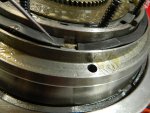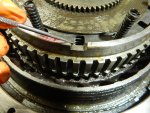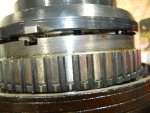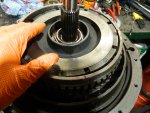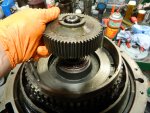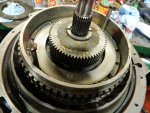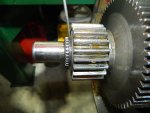rustystud
Well-known member
- 9,279
- 2,984
- 113
- Location
- Woodinville, Washington
It was raining like "a cow pissing on a flat rock" today so I decided to install the front and rear servos .
During this I realized I had forgotten to remove the check ball and spring in the modified front servo I'm going to use. I posted about this in post #121 . I showed what needed to be modified on the front servo to fit our 303M transmission. I also went back and corrected some information I posted last summer.
I also found out about the "A" and "B" MWO modifications. If I had just read my manuals instead of skim read them I would have found this out. Instead I just skim over stuff I think I already know, like "yeah yeah I know this blah blah blah" . Turns out I really need to "read" the manuals and supplementals I own !
The A and B MWO is converting the 302M transmission into a 303M unit.
When the first HydraMatics where installed in the M135's they thought they could get away with just using three clutch plates in the front drum assembly ! The "civilian cars" had five clutch plates at this time !!!!
What were they thinking !!!!
They also replaced the rear servo unit with one that dumped fluid faster giving a faster band apply.
Now back to my install of the servo's.
First off you need to install the rear "discharge tube" into the back of the case. You will need to make sure it is fully engaged. It will be a snug fit.
Second, partially install the front servo, leaving a gap between the servo and main case of about 1/4" . That will allow you to fit the rear servo in since it needs to go into the connecting tube between the two servos and also fit into the rear band socket.
Make sure the front servo tube is fitting securely into the front pump and the servo apply pin is fitting into the front band socket. Also the "discharge tube to the back of the case needs to be installed into the front servo at this time.
Thirdly, install the rear servo. Making sure it is fitting into the front servo connecting tube and the rear band socket. Install all the bolts and slowly turn them down until all assemblies are fully seated. Then torque them down, 28 to 33 ft Ibs .
During this I realized I had forgotten to remove the check ball and spring in the modified front servo I'm going to use. I posted about this in post #121 . I showed what needed to be modified on the front servo to fit our 303M transmission. I also went back and corrected some information I posted last summer.
I also found out about the "A" and "B" MWO modifications. If I had just read my manuals instead of skim read them I would have found this out. Instead I just skim over stuff I think I already know, like "yeah yeah I know this blah blah blah" . Turns out I really need to "read" the manuals and supplementals I own !
The A and B MWO is converting the 302M transmission into a 303M unit.
When the first HydraMatics where installed in the M135's they thought they could get away with just using three clutch plates in the front drum assembly ! The "civilian cars" had five clutch plates at this time !!!!
What were they thinking !!!!
They also replaced the rear servo unit with one that dumped fluid faster giving a faster band apply.
Now back to my install of the servo's.
First off you need to install the rear "discharge tube" into the back of the case. You will need to make sure it is fully engaged. It will be a snug fit.
Second, partially install the front servo, leaving a gap between the servo and main case of about 1/4" . That will allow you to fit the rear servo in since it needs to go into the connecting tube between the two servos and also fit into the rear band socket.
Make sure the front servo tube is fitting securely into the front pump and the servo apply pin is fitting into the front band socket. Also the "discharge tube to the back of the case needs to be installed into the front servo at this time.
Thirdly, install the rear servo. Making sure it is fitting into the front servo connecting tube and the rear band socket. Install all the bolts and slowly turn them down until all assemblies are fully seated. Then torque them down, 28 to 33 ft Ibs .
Attachments
-
5.3 MB Views: 5
-
5.7 MB Views: 5
-
5.4 MB Views: 5
-
5.3 MB Views: 6
-
5.2 MB Views: 5
-
5.1 MB Views: 5



